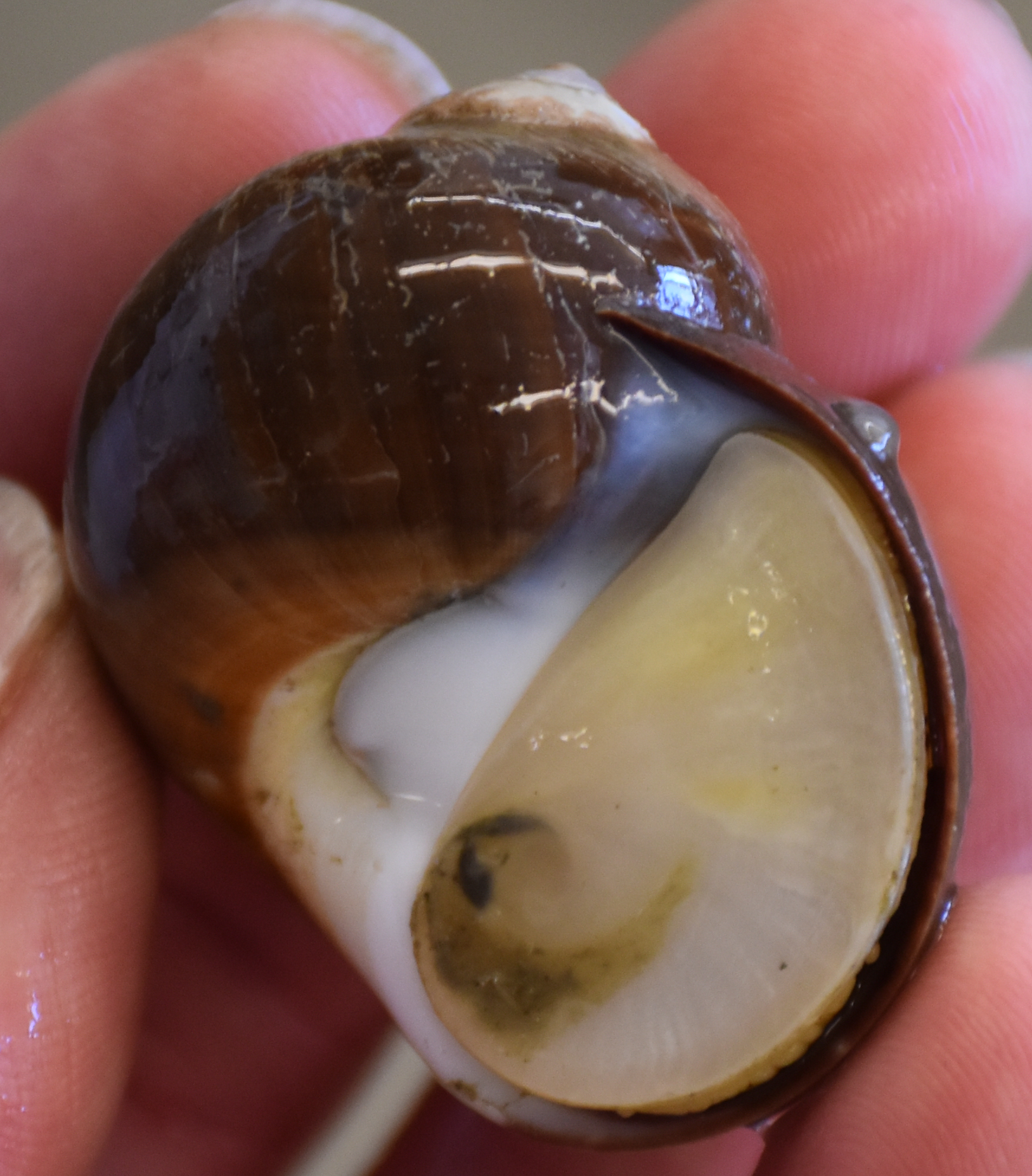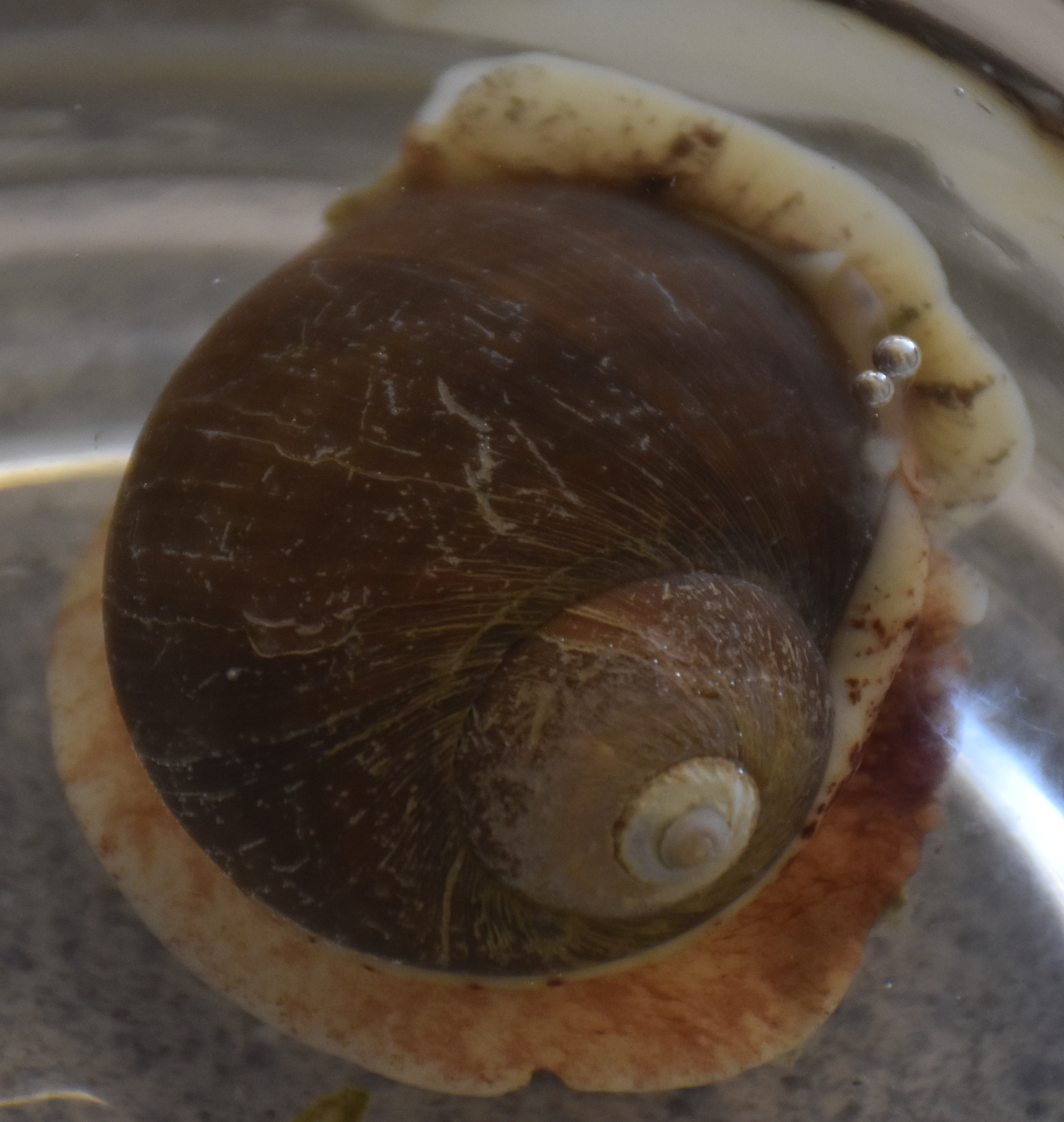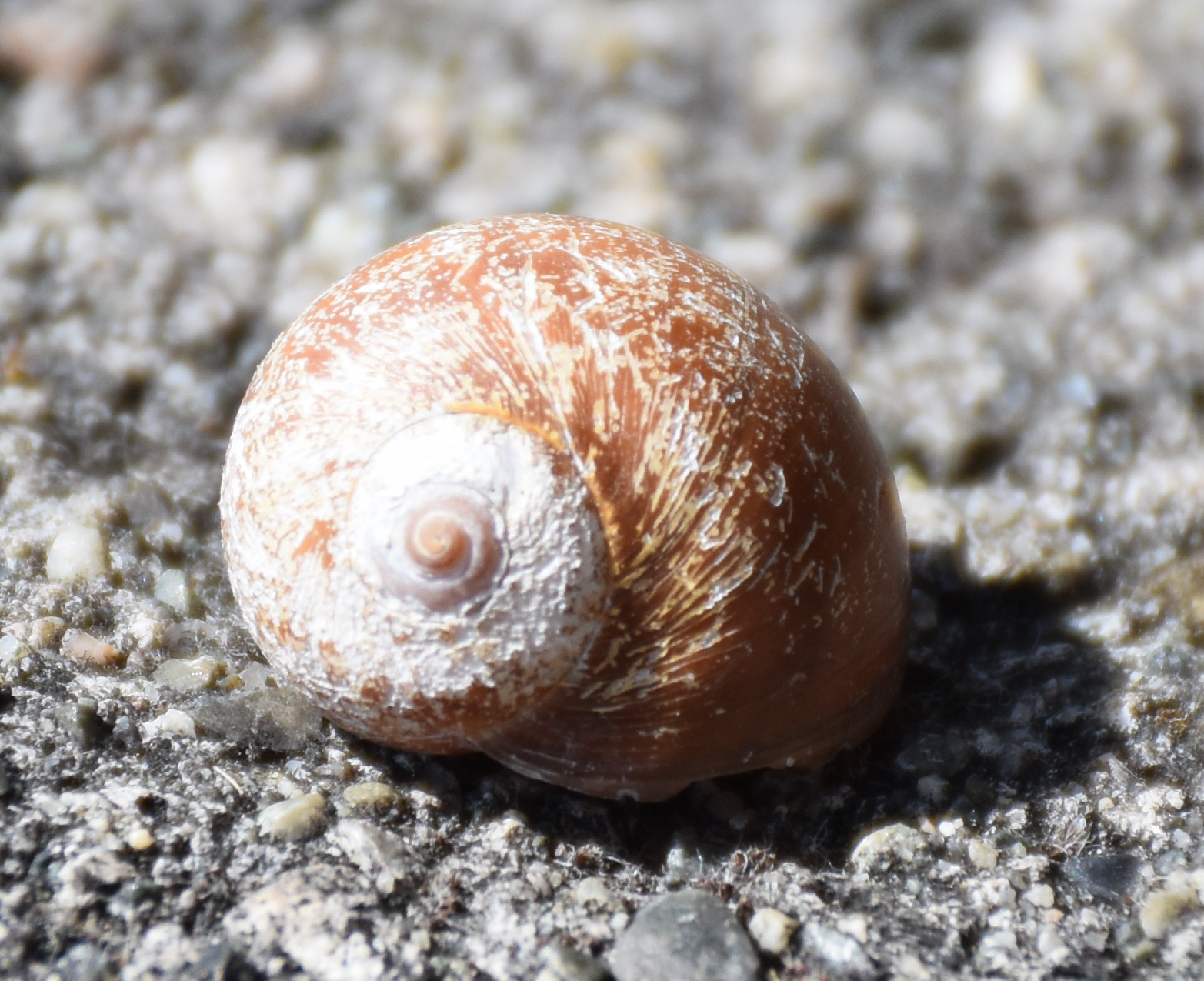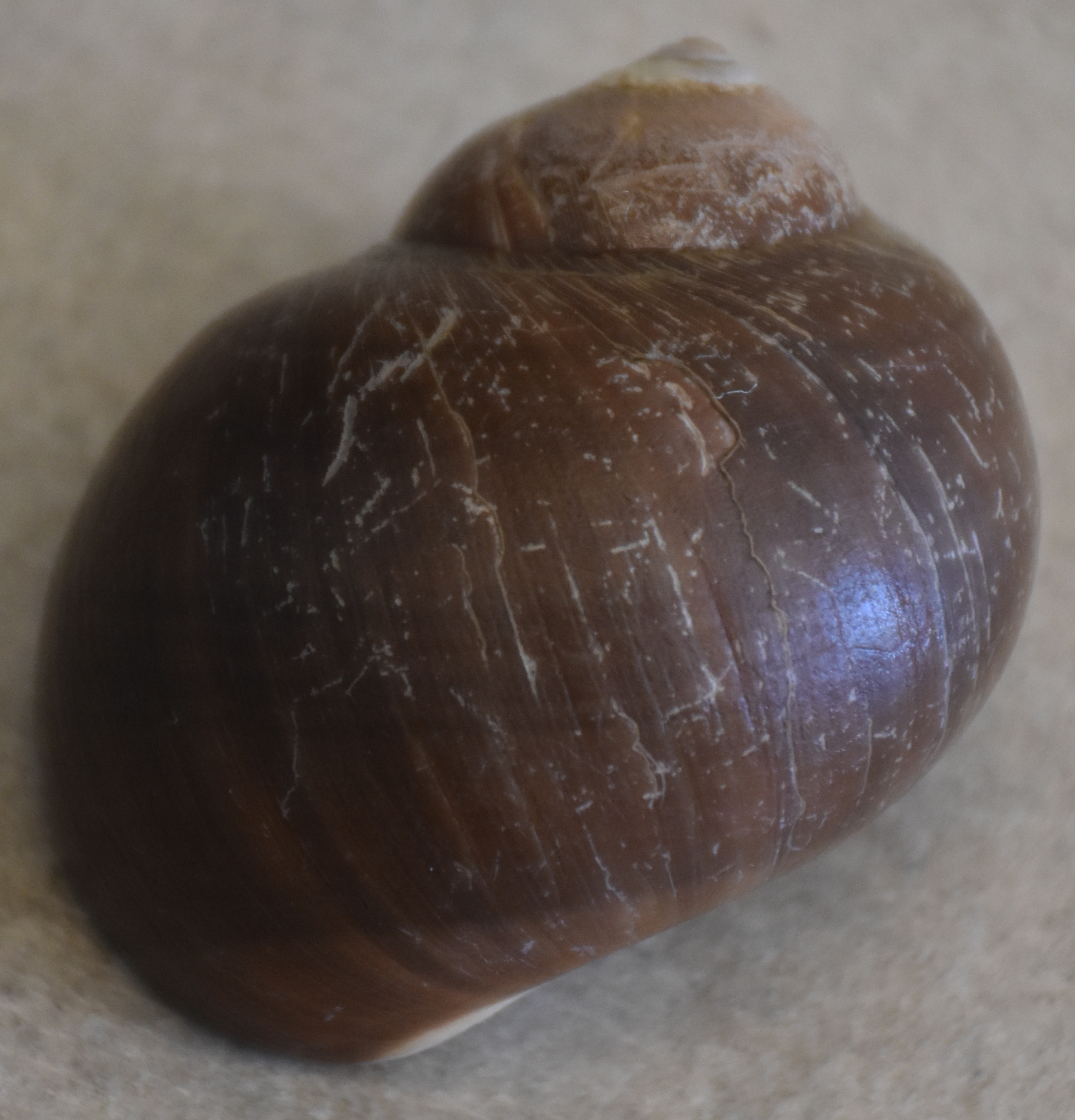Description: As with all moon snails, this shell is round and bulbous. In this species the umbilicus is open into just a slight slit (photo) (or sometimes closed) and the operculum, instead of being horny and brown as in Polinices. lewisii, is at least slightly calcified and light colored (photo). The snail has 4 or 5 whorls at its maximum size of about 5 cm height. Color gray-brown, cream, or whitish (photo). The snail's partly translucent body is cream-colored with dark brown spots and blotches (photo). While still globular like a moon snail, it is slightly less spherical and its spire is slightly more pointed that that of Polinices lewisii.
How to Distinguish from Similar Species: Polinices lewisii gets well above 5 cm height, is cream-colored, pink, or beige, has 5-6 whorls, and the umbilicus is completely covered with a large callus that spreads over much of the columella region of the body whorl.
Geographical Range: Circumpolar in the Arctic Ocean; in the NE Pacific extends southward to northern California.
Depth Range: Subtidal down to 2000 m.
Habitat: Sandy bottoms.
Biology/Natural
History: Although
moon snails can close up completely within their shells, they can also
expand very greatly until their body, several times larger than the
shell,
wraps around the shell like a snowplow as they push their way through
the
sand searching for bivalve
prey. Moon snails also lay their eggs in a distinctive, curled collar
leading
to the name "necklace snail" in England. The egg mas of this species
has
tiny protuberances.
| Return to: | |||
| Main Page | Alphabetic Index | Systematic Index | Glossary |
References:
Dichotomous Keys:Kozloff, 1987, 1996 (as Natica clausa)
General References:
Byersdorfer and Watson, 2010
Harbo,
1997
Lamb
and Hanby, 2005
Morris,
1966 (as Polinices
pallidus)
Scientific Articles:
Web sites:
General Notes and Observations: Locations, abundances, unusual behaviors:

Unlike our common Polinices
lewisii moon snail, the operculum
of Euspira
pallida is calcified.
Photo by Dave Cowles July 2024.

The body of the snail is cream color, with brown streaks and blotches.
Photo by Dave Cowles, July 2024.

This individual, about 1.5 cm shell height, caught by otter trawl at
80 m depth in San Juan Channel. Was occupied by a hermit crab. Photo by
Dave Cowles August 2023.

A view of the nearly sealed umbilicus
on thhe 1.5 cm shell above, plus the aperture
Photo by Dave Cowles, August 2023
Authors and Editors
of Page:
Dave Cowles (2023): Created original page
CSS coding for page developed by Jonathan Cowles
Salish Sea Invertebrates web site provided courtesy of Walla
Walla University
